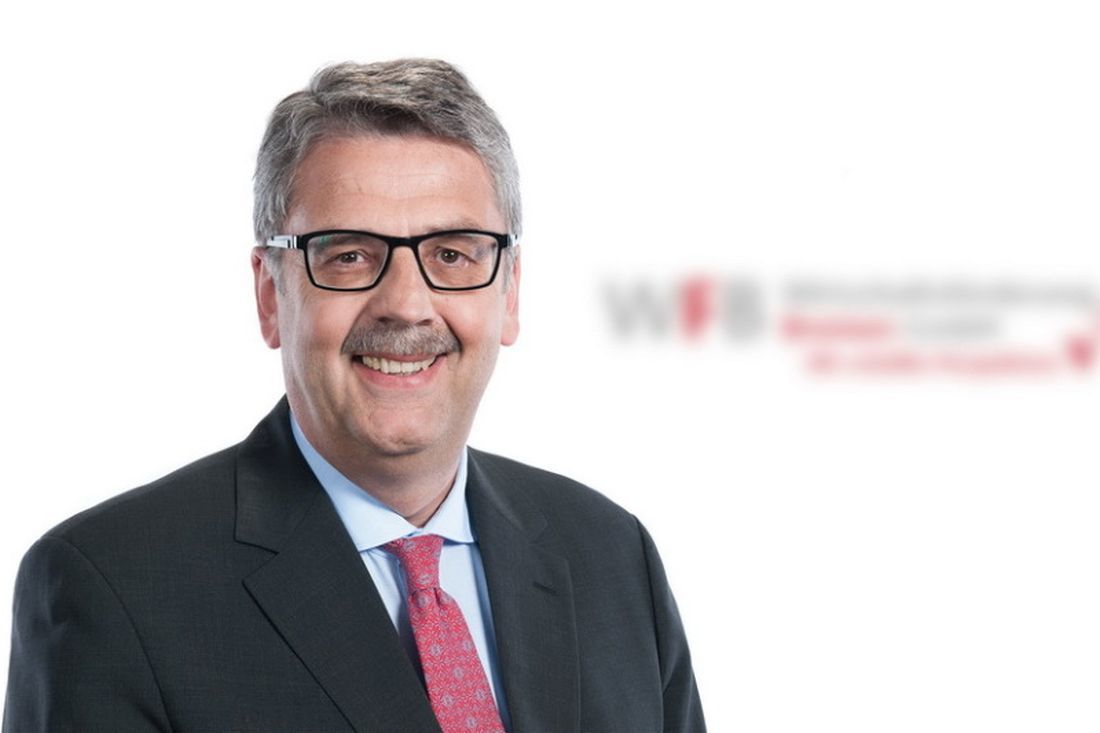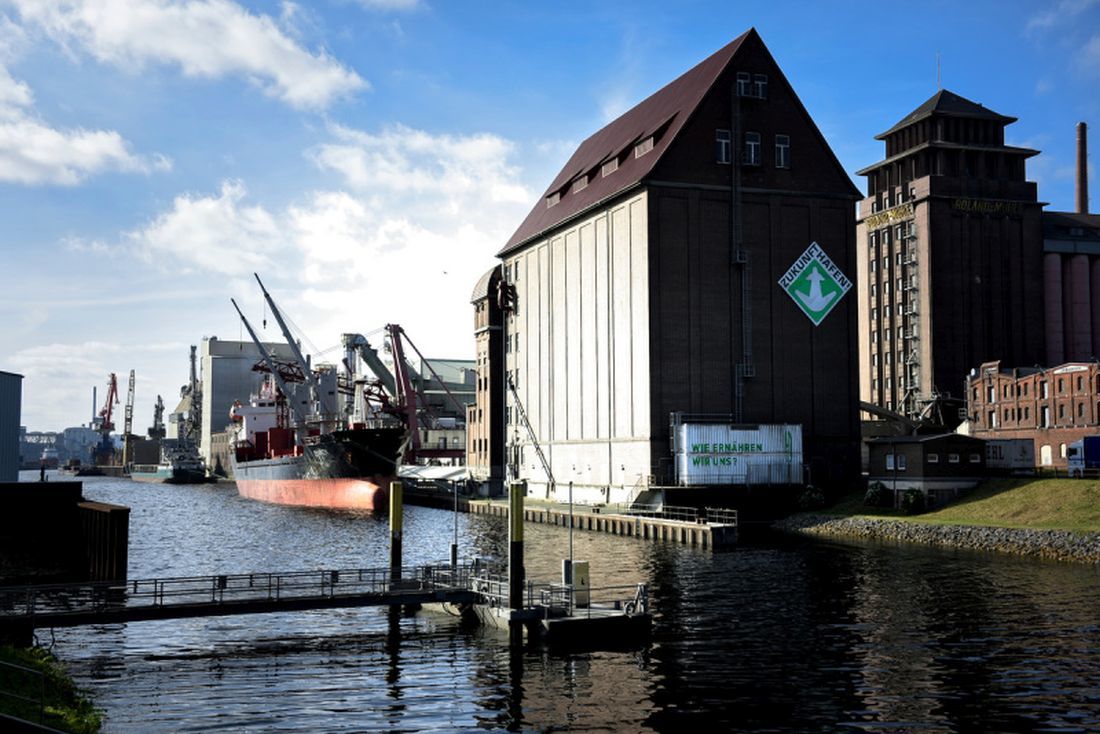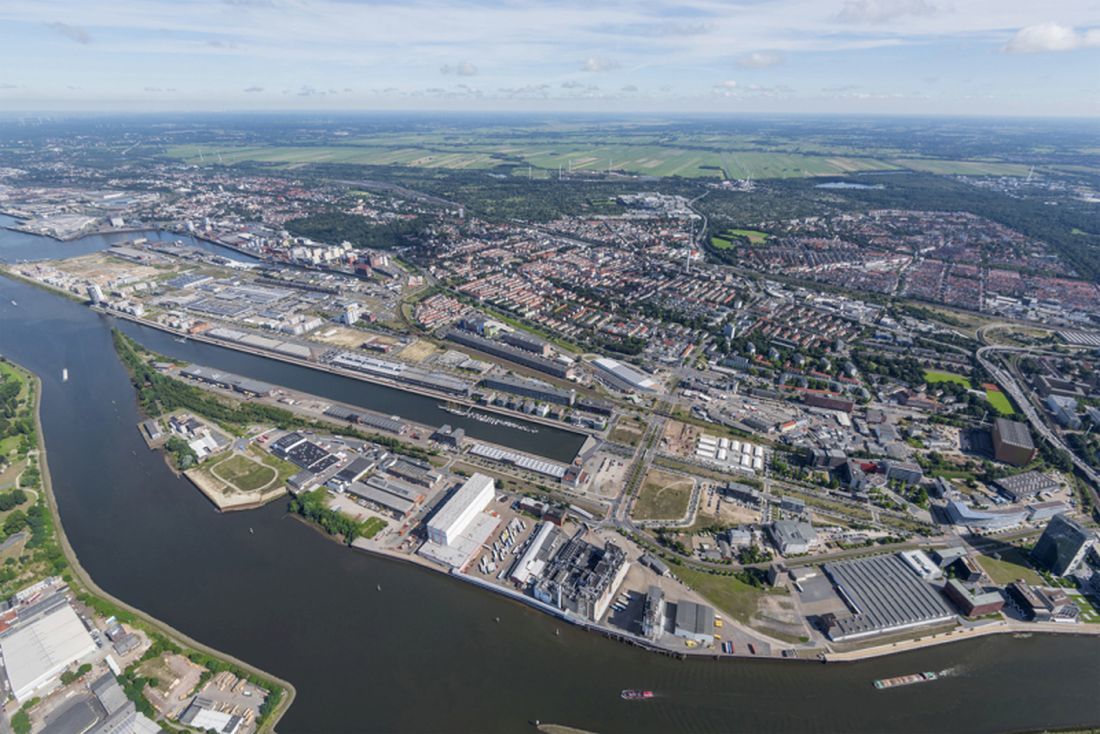“The Überseestadt district will continue to flourish”
Überseestadt (New Harbour District)The development of Bremen’s Überseestadt quarter is a genuine success story. Much more rapidly than originally envisaged, it has evolved into a modern district that is of equal interest to investors, business and local residents. Bremeninvest’s role is to market and develop commercial real estate, some of which it owns, and some of which is owned by third parties, e.g. the city of Bremen. In this interview, Andreas Heyer, CEO of Bremeninvest, explains the nature of the Überseestadt property market, the area’s positioning within the sector, and his assessment of its future prospects.

Mr Heyer, Bremen’s city centre is being greatly enhanced by a number of major building projects run by private investors. How would you rate the potential and the role of the Überseestadt district in this context?
Überseestadt is and will remain a special development area. Bremeninvest was not only involved in drawing up the original master plan, but also had responsibility for its development and for marketing all the plots. That is a very particular remit. Although the Überseestadt has dominated the momentum of the Bremen property sector in recent times, it is no longer solely responsible for the noticeable transformation of Bremen. The city centre is now also receiving a highly welcome development boost. The result is an interaction between two strong areas, each with a completely different conceptual focus.
What role does a major project like the Überseestadt play at Bremeninvest, and what is its current status?
We have two colleagues handling corporate services. They look after the businesses in the Überseestadt district, but several other departments of Bremeninvest are also involved, of course, e.g. development, contract management, property management and location marketing. Every four weeks there is a management meeting which reviews the area’s development, in collaboration with the construction department and the business department. There is also active, ongoing communication, including regular working meetings. At the Überseestadt Advisory Board, which meets twice a year, we compare notes with stakeholders from the area, such as representatives from Walle local council or businesses. Different parts of the area have reached different stages of development. The current focus is on the Überseeinsel project and the head of Europahafen harbour, where the Zech Group is building a high-profile architectural ensemble. Equally important is the development of projects for small businesses, and of the Holz- und Fabrikenhafen area. The core objective of the Überseestadt district is to achieve a harmonious coexistence of the old port industries with more recent additions to the area.

The Übersee district has come a long way since the idea was first conceived. How has the project developed, and how does it compare at national level?
If you look at the original vision of the master plan and compare it to the actual implementation, the main thing you will notice is how well the waterside locations have been developed. In addition, there has been an unplanned but welcome concentration on the residential sector, which is badly needed in Bremen, and which has further enhanced the quality of the Überseestadt district. The question of how best to combine old and new was already on the agenda anyway, so housing was an ideal fit with that. The focus in that regard is currently on Europahafen harbour and the Überseeinsel, the former Kellogg’s business premises. There are comparable projects in other parts of Germany, which have succeeded in revitalising old port areas. But the key stats speak for themselves: the Überseestadt Bremen development area is twice the size of Hamburg’s HafenCity, but that receives far more attention due to Hamburg’s overall scale and international reputation. We can live with that though, we’ve still got a lot going for us. The important thing is that we were able to successfully develop the Überseestadt district in a very organic way, mainly based on regional activity – and much faster than originally planned.

Which sectors are interested in the Überseestadt district as a location?
We started with around 300 existing companies, mostly port industries, and about 6,000 employees. Now the Überseestadt is home to approx. 1,000 businesses with a total of around 16,000 employees. There are some smaller businesses, with a traditional office and warehouse setup. The office space sector has been a new addition. The area is also ideally placed for the service industry, and will be developing accordingly.
How does Bremen manage to stand out as a location for real estate investment within the sector, and what role does the Munich real estate trade fair Expo Real play in this?
Europe’s largest real estate trade fair is held annually over three days in October. In 2018, we attended with a completely overhauled, innovative stand concept and a record number of 27 partners. The Bremen stand included representatives from the entire spectrum of the real estate sector: banks, developers, lawyers, IT companies, estate agents and business developers from Bremen and Bremerhaven. Although the footprint of the Bremen stand remained the same, we used a two-tier setup for the first time, which provided us with an additional 200 square metres of space. We also employed an entirely different form of technical presentation. The feedback has been very positive, both from the participants and from the many visitors to the stand. Appointments and meetings had to be scheduled quite close together, an indication of the potential inherent within the market.

What role does the Überseestadt district play at the Bremen stand?
A trade fair presence is not a jigsaw puzzle where every area is allocated its own particular slot. The main focus is on communication, on conveying the image that we are open to the world. It’s about gauging potential and creating new ideas of where investment could take place. This time we really pushed that angle, almost exclusively from the perspective of the Überseestadt. It is great that we are now able to address a range of different target groups. With the current portfolio, we have expanded the scope by including new projects, be it the development of the city centre or the commercial development of the Hansalinie Industrial Estate. This leads to a certain amount of cross-fertilisation, making Bremen even more interesting for investors, both at national and international level.
Some of the interest from industry professionals is likely to be based on the 2018 Bremen property market report. In your view, what are the most important findings of that report?
Bremen remains attractive when compared with its competitors, and it continues to be popular with investors. There is particular interest in the Überseestadt district as a location for company head offices, but also for the residential sector. We are seeing a great deal of construction activity and only low vacancy rates on the property market. However, this also means that there is limited space available for spontaneous development. But everything here is organised as part of development projects: we are not in the business of financing vacancy, and our investments are based on sound judgement. This results in a very promising supply and demand situation.
According to the report, the Überseestadt district was the location with the highest take-up of office space in Bremen for the second year in a row, and it also attracted prime rents. Is this trend likely to continue?
The prime rents are being achieved by new, high-quality properties in premium waterside locations that meet the latest energy requirements, among other things. This is true for residential buildings as well as for commercial real estate. With the construction projects still in the pipeline there is still some room for manoeuvre – we can expect the momentum to continue. But we will have to wait and see if the market is able to absorb all of this. In addition to the office space market, there are also plans for commercial development projects featuring hotels. This will create a degree of diversity, with the focus on commercial spaces.
How do you assess the future of the property market in the Überseestadt district? How will projects need to be planned and implemented to make them competitive?
Generally the crucial issues are things like sustainability, innovation with regard to smart technologies, and mobility. We need to focus on requirements as we plan and build, that goes for the target areas of office, residential and retail space, and for the manufacturing industry. The digital age poses new challenges for the real estate sector, and investors need to take those into account in order to attract reliable, long-term tenants. As the number of available construction sites and properties to market in the Überseestadt district grows smaller, our challenge is to integrate everything carefully into the existing structure. But I am very confident. The Überseestadt district will continue to flourish, more jobs will be created there, and people will continue to want to work and live there.
Mr Heyer, thank you for talking to us.
Information
Andreas Heyer has been Chief Executive Officer of Bremeninvest since 1 June 2009. Before that, he was managing director of the business development company Hannoverimpuls and director of the Sparkasse Hannover savings bank.
Success Stories
Spending the night in a former rice warehouse: the John & Will Silo-Hotel in Bremen's Überseeinsel district
Bremen has had a new hotel since the first of August 2024 – but not just any hotel. With its unique architecture and innovative sustainability principles, the John & Will Silo-Hotel by Guldsmeden stands out as a flagship project in Bremen's Überseestadt district. A place that offers far more than just accommodation and can play an important role in Bremen's tourism.
Learn moreLocational factors for companies: seven convincing arguments for choosing Bremen
The right location for a business depends on many factors - infrastructure, location, but also labor supply and quality of life. Bremen convinces companies from Germany and abroad with numerous location factors.
Learn moreTen Bremen companies in the import and export business
As a Hanseatic metropolis, international trade is in the blood of the people of Bremen. From here, companies control their worldwide destiny, import and export goods from the most remote corners - we present 10 of them
Learn more
